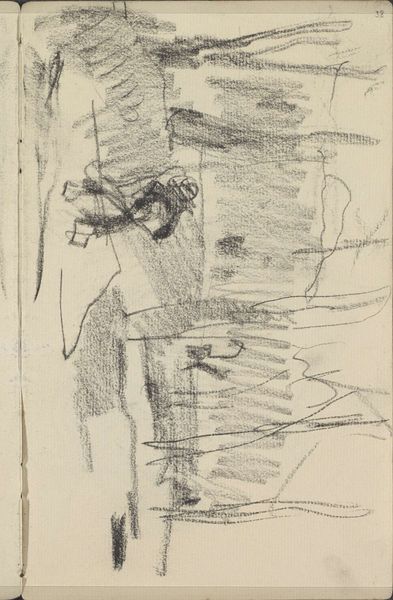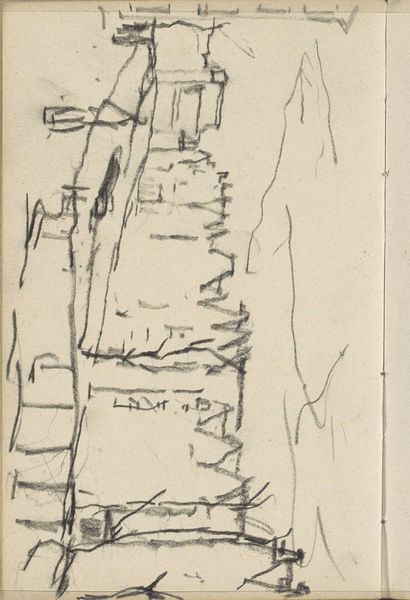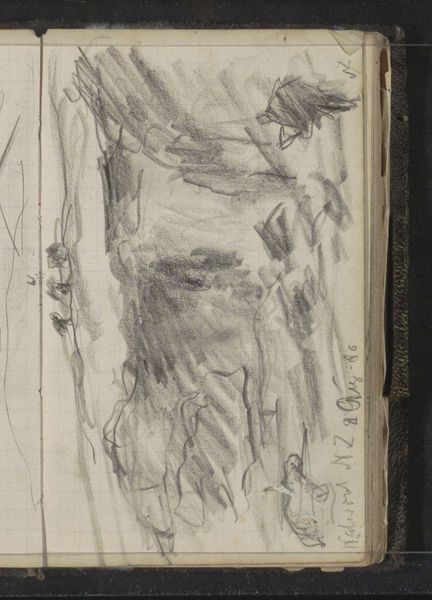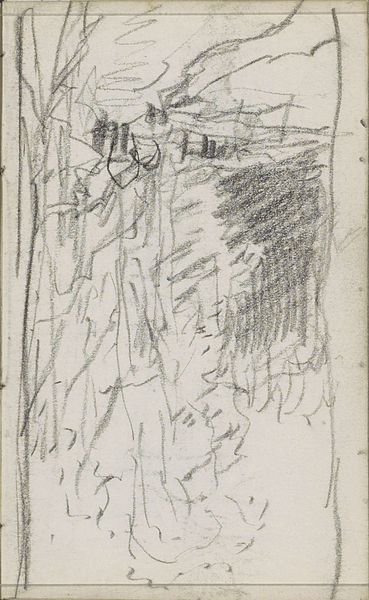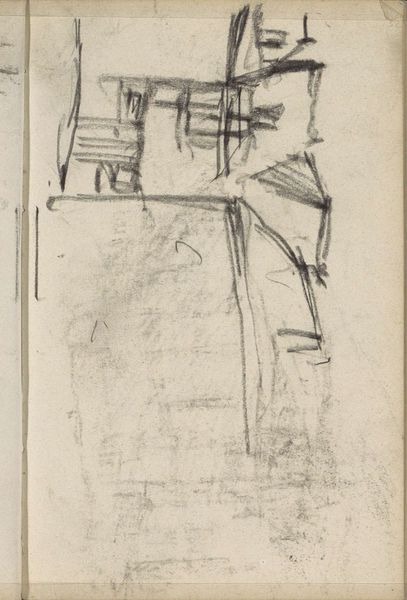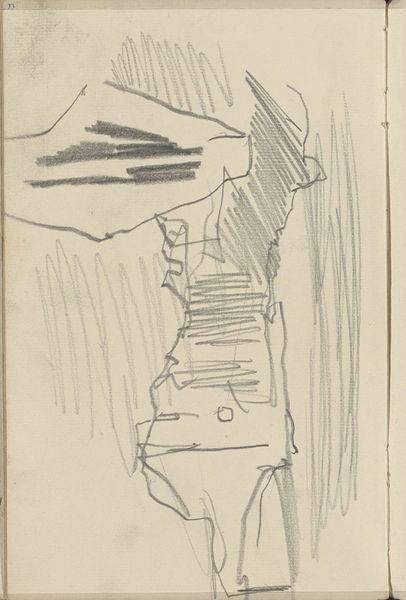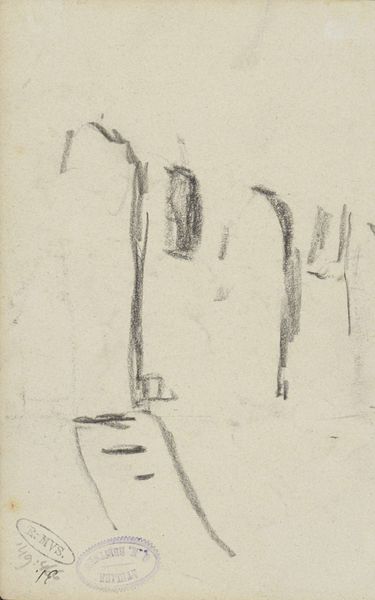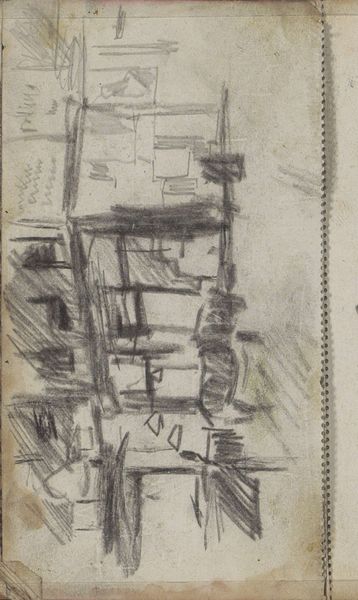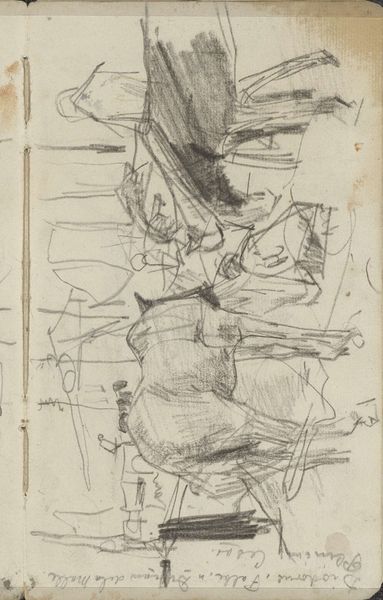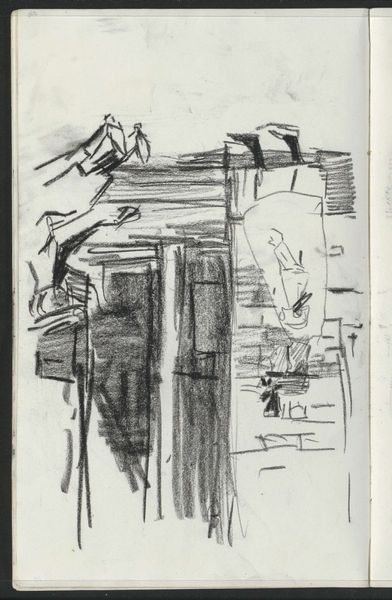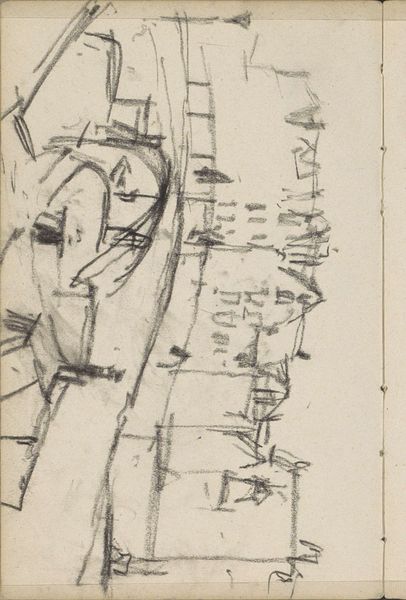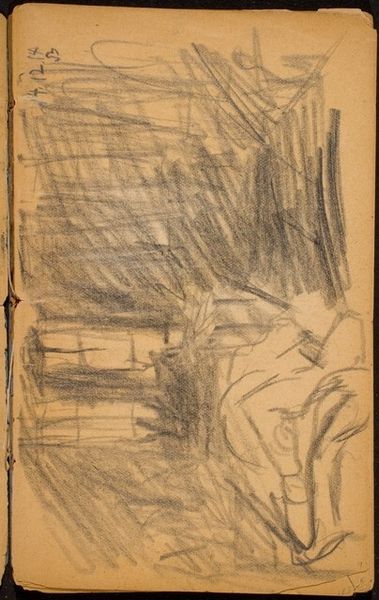
Gezicht in Amsterdam, mogelijk de Willemsstraat Possibly 1882 - 1900
0:00
0:00
georgehendrikbreitner
Rijksmuseum
Copyright: Rijks Museum: Open Domain
Editor: So this is George Hendrik Breitner’s "Gezicht in Amsterdam, mogelijk de Willemsstraat," which roughly translates to "View of Amsterdam, possibly the Willemsstraat." It's a pencil drawing, probably made between 1882 and 1900. There's something very raw about it; it looks like a quick sketch capturing a fleeting moment. What do you see when you look at this work? Curator: I'm immediately drawn to the artist’s choice of materials and the rapidness of execution. Breitner wasn’t aiming for meticulous detail; instead, he used pencil to capture the atmosphere of the street, probably on-site. Considering the social context, the rise of industrialization at this time influenced art. Artists moved outdoors and were impacted by newly produced pigments and portable materials that aided painting in “real time.” How does this relate to urban transformation? Editor: I see your point! The sketchiness emphasizes the city as being dynamic, under constant transformation. It almost makes the buildings feel temporary. Curator: Precisely. It also reveals how the artist likely saw the materials – a cheap notebook, easily sharpened pencil – not as constrictions, but as facilitators of documenting modern urban life, where industrial labor dictated the rhythms of life and how the world became represented on paper. Can we consider drawing less about precision, but instead as a tool that allowed labor to flow efficiently in the city, just as an industry would operate? Editor: That’s an interesting thought. Breitner's drawing, seemingly simple, shows us a connection between labor, materials, and the urban landscape. So it becomes this record of lived experiences, translated through readily available materials of the time. Curator: Exactly. Instead of thinking of ‘high’ versus ‘low’ art distinctions, we consider art to be tied directly to labor conditions and resourcefulness and ingenuity to document time and movement. The means and the moment coming together, quite literally, on paper. Editor: I never considered it that way before. Thanks, this was enlightening.
Comments
No comments
Be the first to comment and join the conversation on the ultimate creative platform.

